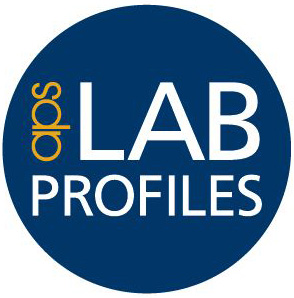Lab Profile
APS Lab Profile: George Mason University Arch Lab
Meet the Scientists! Watch video clips of lab personnel including Raja Parasuraman, Carryl Baldwin, Debbie Boehm-Davis, Matt Peterson, Tyler Shaw, Jim Thompson, and Robert Youmans, as they explain their role and research in the Arch Lab.
 APS provides an overview of the George Mason University Arch Laboratory located in Fairfax, Virginia, USA. Watch Deborah Boehm-Davis (Associate Dean, College of Humanities and Social Science) and Raja Parasuraman (Director Human Factors and Applied Cognition Graduate Program and Chair of the Neuroimaging Core of the Krasnow Institute) discuss the field of human-factors research and how the Arch Lab bridges theory, experimentation, and application in the cognitive sciences.
APS provides an overview of the George Mason University Arch Laboratory located in Fairfax, Virginia, USA. Watch Deborah Boehm-Davis (Associate Dean, College of Humanities and Social Science) and Raja Parasuraman (Director Human Factors and Applied Cognition Graduate Program and Chair of the Neuroimaging Core of the Krasnow Institute) discuss the field of human-factors research and how the Arch Lab bridges theory, experimentation, and application in the cognitive sciences.
The Arch Lab came into being in 1996 when Debbie Boehm-Davis and Wayne Gray (then a faculty member in the department) decided to combine forces and merge their labs. For 15 years, the Arch Lab has existed as a merged lab for all faculty members in the Department of Human Factors and Applied Cognition at George Mason. Faculty members have their own areas of research, but they share lab facilities. This level of collaboration and cooperation is what makes the Arch Lab unique, says lab director Raja Parasuraman.
The name ‘Arch Lab’ was coined as a way to represent the broad spectrum of research conducted in the lab, from basic research on one side all the way to applied research on the other. “In an ideal world,” says Boehm-Davis, “those two sides are connected – we don’t have people doing work in the academy that is not related to what’s happening in the real world. But we also hope the real world is aware of the work that is being done in the university.”
The faculty and graduate students in the Arch Lab research various areas of cognition, including attention, audition, biological motion, eye movements, imagery, memory, and visual perception. And their research is applicable for automation, aviation, driving, robotics, and human-computer interaction.
According to Parasuraman, human-factors research is so important because real-world systems are often designed without taking human capabilities into account. “Only after the fact, when there is some incident, some accident, or problems in using the system, do they come to light,” he observes.
Ultimately, the goal of the Arch Lab is to conduct research that will help develop better systems and to provide graduate students with the tools to do so, whether they end up in an academic, industry, or government position.
Want more human factors? Watch the Human Factors Rap, created by students and faculty in the Arch Lab for a Human Factors and Ergonomics Society video contest in 2011 to help explains what the field of human factors is.





APS regularly opens certain online articles for discussion on our website. Effective February 2021, you must be a logged-in APS member to post comments. By posting a comment, you agree to our Community Guidelines and the display of your profile information, including your name and affiliation. Any opinions, findings, conclusions, or recommendations present in article comments are those of the writers and do not necessarily reflect the views of APS or the article’s author. For more information, please see our Community Guidelines.
Please login with your APS account to comment.